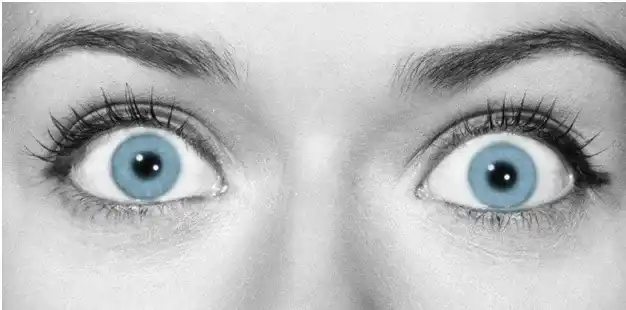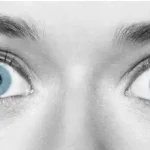The word cancer is devilish in itself. Moreover, when it affects one of the most sensitive organs, it gets even worse. In India, Eye Cancer is a highly comprehensive disease but is also fairly unknown. People are either unaware or possess very little information about the causes, symptoms, effects or even existence of this problem. As awareness is the first key to combat any problem, here we bring to you a set of facts which you should know about Eye Cancer. To begin with, here is what Eye cancer is scientifically defined as; ‘It is the development of tumour due to the uncontrollable massing of cells, in any part of the eye. Here are a few important pointers about eye cancer and India:
- Statistics: Among every 5000 cases of eye cancer occurring worldwide, around 1000 of them occurs in India. That is why Eye cancer is a comprehensive disease in India. The age group that is most prone to developing the problem is between 0-4 years. That is, children are highly susceptible to be affected by any sort of eye cancser. However, the diagnosis of cancer can be delayed because there is very less scope to observe clear and relevant symptoms of cancer in the initial days.
- Types of cancer: The range of symptoms observed in a case of eye cancer can be varied depending upon the type of cancer developed. On the basis of the origin of cancer, it can be classified into two types – Primary and Secondary. As the name suggests, secondary intraocular cancers are seeded in some other part of bodies and eventually effects eyes too as they develop. On the other hand, primary intraocular cancers are the ones primary developed in some part of an eye only. There are two primary cancers that are most commonly diagnosed in patients. In kids, it is Retinoblastoma and in adults, it is Intraocular Melanoma.
- Causes: The causes behind the development of eye cancers, especially primary intraocular cancers such as retinoblastoma or melanoma – are not very vivid. A variety of reasons ranging from Heredity to excessive interactions with UV radiations are the possible noted causes. You can rather note certain risk factors which are more prone to developing eye cancer Such as the colorof iris, Outdoor activities in the sun, excessive eye strain, etc.
- Symptoms: The symptoms visible on the development of eye cancer are contrasting in cases of adults and children. In adults – blurred vision, loss of peripheral vision, changing a color of the iris, sagginess and bulging eyes, pain and redness in the eye are few common symptoms. In the case of children – misaligned or cross eyes, whitened pupil(s), development of glaucoma and sever pain in the eye are the common symptoms.
- Treatment: Eye cancers can be treated by three ways – Surgery, Chemotherapy or Radiotherapy. The choice of the mode of treatment among these three depends upon various factors such as the type of cancer, size and vastness of cancer, the health, age and fitness level of the patient, etc.
FACT – Lung Cancer and Breast Cancer are the most common causes of metastatic cancer in the eye As previously stated, cancer that primarily starts in the eye is called primary eye cancer and cancer that spreads from other parts of the body to the eye is known as secondary eye cancer or metastatic cancer. Even though it is the most common form of intraocular cancer in adults, it can sometimes remain largely undetected until the patient starts suffering vision problems or their eyes gets pushed forward. Ocular or eye metastasis are usually from lung cancer in men and breast cancer in women. Some other less common origin sites include the prostate, the kidney, and the thyroid. FACT – A form of Eye Cancer affects only children Retinoblastoma is a rare form of eye cancer that affects mostly children who are younger than 6 years old. This type of cancer originates in the retina, the thin layer of nerve tissue that coats the back of our eyes and enables us to see. Retinoblasts are immature cells of the retina which multiply during our early life to form the retina. Retinoblastoma affects the rate of growth in these cells and causes them to multiply too quickly, leading to problems with the formation of the retina. Fortunately, most cases of retinoblastoma are completely cured. Read Also: Treatment Of Eye Cancer in Children FACT – Eye Cancer can be treated via many methods When it comes to the treatment of Eye Cancer, there are three primary options which are surgery, radiotherapy, and chemotherapy. The treatment procedure depends on a variety of factors including the type of eye cancer, the rate of tumour growth, the site of the tumour and the general health and coexisting diseases the patient already has. Some of the common treatment procedures include:
- Laser therapy.
- Radiotherapy.
- Chemotherapy.
- Limited resection.
FACT – Primary Eye Cancer is very rare Even though it is the most common form of primary eye cancer in adults, ocular melanoma is an extremely rare form of cancer with an incidence of 5 per million adults. It is a primary form of eye cancer, which means that it originates in the eye itself. It most commonly arises in a part of the eye known as the uveal tract. Depending on the location of cancer and size of the tumour, it may or may not show symptoms. FACT – Eye Cancer is the only life-threatening ocular disease Out of all ocular diseases, eye cancer is the only one which is life-threatening. Fortunately, 80% of ocular cancer cases are cured if the disease is detected in its early phase. Some symptoms of eye cancer include:
- Light Flashes.
- Floating spots.
- Vision loss.
- Watery eyes.
- Poor vision and loss of peripheral vision.
The most common causes of eye cancer are occupational hazards. We advise anyone working in a chemical plant or welding facility to use protective sunglasses. Eating a vitamin-rich diet and wearing UV-blocking sunglasses that wrap around the eyes in a protective manner are other preventive steps you can take to stay safe form eye cancer.





